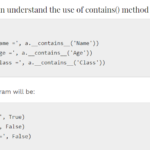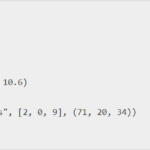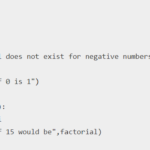In this tutorial, we will learn about Python Counter Objects. Counting objects in Python means tallying how many times things appear in data structures like lists, tuples, dictionaries, or strings. Python offers different techniques for this, and the one you pick relies on your data type and what you want to do.
Counting repeated objects is a common task in programming, and Python has useful tools to help with it. One powerful tool is the Counter class from the collections module. It’s a Pythonic way to count objects efficiently, making it an essential skill for Python developers.
What is the use of Python Counter in Collections?
Python developers use the Counter class because it simplifies counting objects efficiently. It’s a preferred choice for several reasons:
- Simplicity:
Counterprovides a straightforward way to count objects without needing to write custom counting logic. - Efficiency: It’s optimized for fast counting, making it efficient even for large datasets.
- Pythonic: Using
Counteraligns with Python’s philosophy of providing clean and readable code. - Convenience:
Counterreturns a dictionary-like object where elements are keys and their counts are values, making it easy to work with. - Versatility: You can use it with various data structures, not just lists, including strings, tuples, and more.
Syntax:
from collections import Counter
# Create an iterable (e.g., a list, string, tuple, etc.)
my_iterable = [1, 2, 2, 3, 3, 3, 4, 4, 4, 4]
# Use Counter to count elements in the iterable
counter = Counter(my_iterable)
# Access counts for specific elements
count_of_element = counter[element]
# Print the Counter object and count of specific elements
print(counter)
print("Count of", element, ":", count_of_element)
Example:
from collections import Counter
# Create a list of numbers
my_list = [1, 2, 2, 3, 3, 3, 4, 4, 4, 4]
# Use Counter to count the occurrences of each element
counter = Counter(my_list)
# Access the count of specific elements
count_of_3 = counter[3]
count_of_4 = counter[4]
# Print the Counter object and counts
print(counter)
print("Count of 3:", count_of_3)
print("Count of 4:", count_of_4)
Output:
Counter({4: 4, 3: 3, 2: 2, 1: 1})
Count of 3: 3
Count of 4: 4
In this example, we start by importing the Counter class from the Collections module. Next, we create a list called my_list. Then, we use Counter(my_list) to efficiently count how many times each element appears in the list. To get the count of specific elements, we simply use counter[element] notation. Finally, we print out the results. When we look at the output, we can see both the Counter object itself and the counts for elements 3 and 4.
Different Examples of Python Counter
- Python Counter with String
- Python Counter with List
- Python Counter with Dictionary
- Python Counter with Tuple
Python Counter with String
Python Counter is a powerful tool from the collections module that helps us count the occurrences of characters or substrings within a string. It creates a dictionary-like object where keys represent unique characters or substrings, and values denote their respective counts.
Syntax:
from collections import Counter
# Create a string
my_string = "programming is fun and programming is rewarding"
# Use Counter to count characters or substrings
counter = Counter(my_string)
# Access specific counts using counter[key]
count_of_a = counter['a']
# Print the counts and the Counter object
print("Count of 'a':", count_of_a)
print("Counter object:", counter)
Example:
from collections import Counter
# Create a string
my_string = "programming is fun and programming is rewarding"
# Use Counter to count characters or substrings
counter = Counter(my_string)
# Access specific counts using counter[key]
count_of_a = counter['a']
# Print the counts and the Counter object
print("Count of 'a':", count_of_a)
print("Counter object:", counter)
Output:
Count of 'a': 3
Counter object: Counter({' ': 9, 'g': 3, 'r': 3, 'i': 3, 'm': 2, 'n': 2, 'p': 2, 'o': 2, 'a': 3, 's': 2, 'f': 1, 'u': 1, 'd': 1, 'w': 1})
In this example, we imported Counter from the collections module and created a string named my_string, and then used Counter to count the characters within it. Specifically, we accessed the count of the character ‘a’ using counter['a']. The output displays the count of ‘a’ (which is 3) and the Counter object containing counts for all characters in the string.
Python Counter with List
Python’s Counter is a powerful tool for counting elements in a collection (e.g., a list) and creating a frequency distribution of those elements.
Example:
from collections import Counter
# Create a list
my_list = [1, 2, 2, 3, 4, 4, 4]
# Use Counter to count elements in the list
counter = Counter(my_list)
print(counter)
- First, we import the Counter class from the collections module.
- Next, we create a list called my_list, which contains various elements.
- Then, we use Counter(my_list) to count the occurrences of each element in the list.
Output:
Counter({4: 3, 2: 2, 1: 1, 3: 1})
In the output, the Counter Object is displayed as a dictionary like structure. Each key represents an element from the list, and the corresponding value is the count of how many times that element appears in the list. For example, element 4 appears 3 times, element 2 appears 2 times, and so on.
Python Counter with Dictionary
A Counter in Python is a built-in class from the Collections module. It’s designed to count the occurrences of elements in iterable objects and return the counts as a dictionary-like object.
Syntax:
from collections import Counter
# Create an iterable (e.g., list, string, etc.)
my_iterable = [1, 2, 2, 3, 3, 3, 4, 4]
# Use Counter to count occurrences
counter = Counter(my_iterable)
# Access counts for specific elements
count_of_3 = counter[3] # Access the count of 3 in the iterable
Example:
from collections import Counter
# Create a list of numbers
my_list = [1, 2, 2, 3, 3, 3, 4, 4]
# Use Counter to count occurrences
counter = Counter(my_list)
# Access counts for specific elements
count_of_3 = counter[3] # Access the count of 3 in the list
# Print the counts and the Counter object
print("Counts:", counter)
print("Count of 3:", count_of_3)
Output:
Counts: Counter({3: 3, 2: 2, 4: 2, 1: 1})
Count of 3: 3
In this example, we begin by importing the ‘Counter’ class from the ‘Collections’ module. Following that, we create an iterable (e.g., a list) that we want to analyze. Then, we apply ‘Counter’ to count the occurrences of each element within the iterable. To access the count of a specific element, such as ‘3’ in this case, we simply use counter[3]. Finally, we print both the counts and the ‘Counter’ object itself, which provides counts for all elements found in the list.
Python Counter with Tuple
In Python, a Counter is a convenient tool from the collections module that allows you to count the occurrences of elements within an iterable, such as a list, tuple, string, or any other sequence-like object. It provides a dictionary-like interface where elements are treated as keys, and their counts are stored as values.
Syntax:
from collections import Counter
# Create a Counter object
counter = Counter(iterable)
# Access counts of specific elements
count = counter[element]
Example:
from collections import Counter
# Create a tuple of elements
my_tuple = (1, 2, 2, 3, 4, 4, 4)
# Create a Counter object to count the elements
counter = Counter(my_tuple)
# Access the count of a specific element (e.g., 4)
count_of_4 = counter[4]
# Print the Counter object and the count of 4
print("Counter Object:", counter)
print("Count of 4:", count_of_4)
Output:
Counter Object: Counter({4: 3, 2: 2, 1: 1, 3: 1})
Count of 4: 3
In this example, we import the Counter class from the collections module. We then create a tuple my_tuple containing various elements. After that, we use the Counter(my_tuple) constructor to create a Counter object, which counts the occurrences of each element in the tuple. To access the count of a specific element, such as 4, we use counter[4], which gives us the count of 4 in the tuple. Finally, we print both the Counter object and the count of element 4, resulting in the shown output.
















